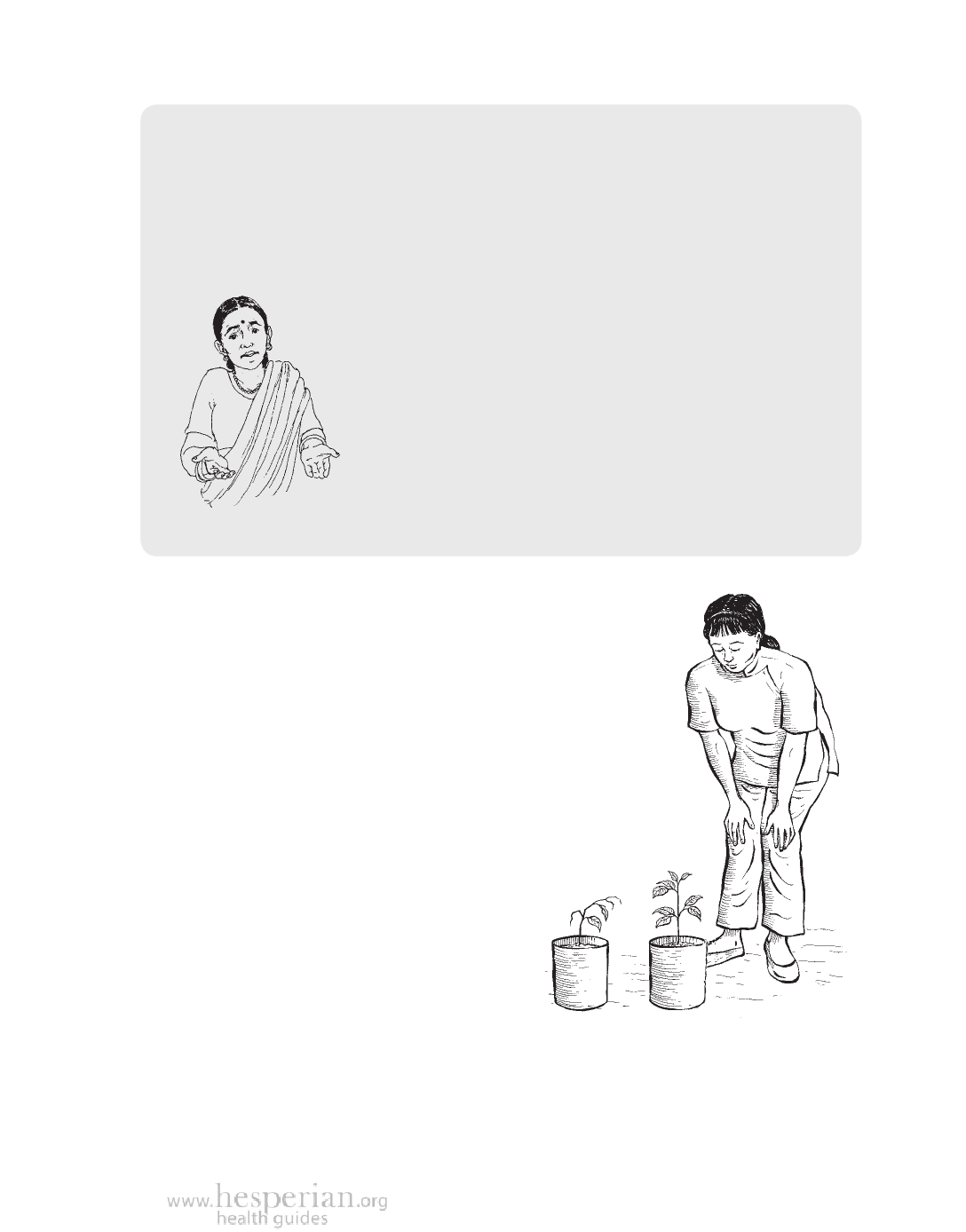
Traditional plant breeding 239
The next day they did what they promised. The first field burned belonged to
Basanna. He supported the burning because he was angry that the Monsanto
Corporation had not been honest with him and that the GE cotton would do
so much harm to his fields and his neighbors. With the money the Farmers’
Association paid for his burned crop, he bought traditional cotton seeds, and
went back to planting the variety that had served him well in the past.
Questions for discussion
• H ave you ever known a farmer to destroy his own
crops? What would make a farmer, or you, do that?
• Can you think of any other ways the farmers of
Karnataka could have shown how much they were
against GE crops?
• W hat are the benefits of growing “improved” GE
seeds?
• What are the “hidden” costs of using GE seeds?
• What else do you know about GE seeds?
Traditional plant breeding
All living things contain tiny parts called genes. Genes
determine how each plant, animal or person grows, and
what it becomes: from a seed to a plant, from an egg to a
chicken, from a child to an adult.
As they interact with conditions such as heat, cold,
wind, soil quality, and so on, the genes in plants determine
how plants will grow. Qualities such as the color, shape,
and size of plants, if they will grow quickly or slowly, when
they produce flowers and fruit, or what nutrients they
have are determined by each plant’s genes.
When farmers select and save the biggest
maize seeds after each harvest to plant the
next year, the gene for large seeds is passed
from one crop to the next over many years,
and the gene for small seeds disappears.
This is how plant breeding works. It is a
slow process of selecting and favoring the
development of the characteristics in a
plant that a farmer wants.
By selecting the seeds of the healthier
plant, you can help the next season’s
crops be stronger.
A Community Guide to Environmental Health 2012